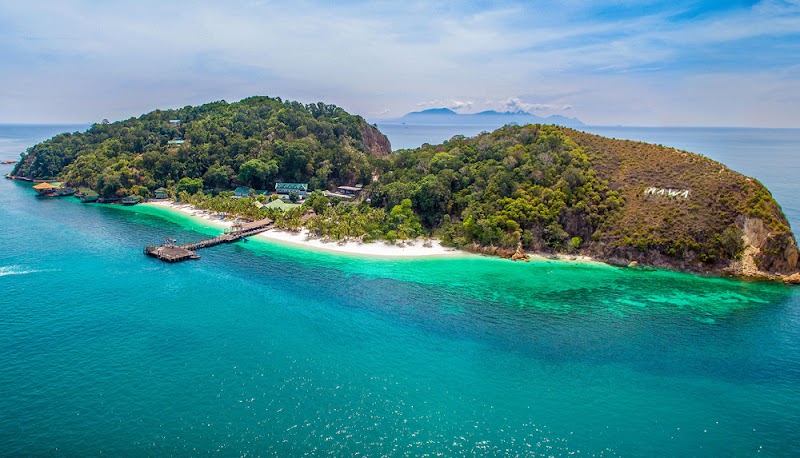Set sail from Mersing for a day of island hopping and snorkeling in the vibrant waters around Tioman Island. Explore crystal-clear reefs, encounter diverse marine life, and soak up practical tips to navigate this spectacular environment safely and sustainably.
Choose Your Boat Wisely
Select a boat with knowledgeable operators who understand local weather and tides, ensuring comfort and safety throughout your island hopping journey.
Bring Reef-Safe Sunscreen
Protect your skin and the coral reefs by using biodegradable sunscreen free from harmful chemicals like oxybenzone and octinoxate.
Pack Light and Waterproof
Carry a dry bag with swimwear, towels, and waterproof camera gear to stay organized and prepared for spontaneous snorkeling stops.
Hydrate Frequently
Salt air and sun exposure dehydrate quickly; bring ample water and sip regularly to maintain energy levels for swimming and hiking between spots.
Island Hopping and Snorkeling in Tioman: A Practical Day on Crystal Waters
The morning sun warms the bright decks of a small boat as it cuts through the calm, crystal-clear waters surrounding Tioman Island. This is the start of a day dedicated to island hopping and snorkeling in one of Malaysia's most vivid marine playgrounds. Departing from Mersing, Johor’s gateway town, you’ll glide between islands, each offering its own brand of unspoiled beauty and vibrant coral reefs.
Your first stop might be Renggis Island, where the water teems with multicolored fish darting through coral fingers. Slipping gently into the water, you’ll feel the current inviting rather than pushing, as you float above a lively underwater world. A mask and snorkel now become your tools for exploration — watch for clownfish weaving through anemones or bright blue parrotfish grazing coral lawns.
Next, a short ride takes you to the more secluded Coral Island, where the water is even clearer and visibility often exceeds 20 meters. Here, you can anchor near white sand beaches and explore shallow coral gardens that dare you to stay longer. The breeze carries the tang of salt and the hum of distant waves, grounding you in the moment but urging you onward.
Practical planning is key: pack biodegradable sunscreen to protect both your skin and the reef, bring a waterproof camera or GoPro to capture fleeting underwater scenes, and wear quick-drying clothes for ease on and off the boat. The day ends back at Tioman's main village, where local seafood stands await hungry adventurers.
Keep an eye on the weather and tides; the sea switches moods quickly, especially during the monsoon season (November to February). The ideal months for this adventure fall from April to October, when seas are calm and marine life flourishes. Before you go, double-check boat schedules and arrange a guide if unfamiliar with the area for a safer, richer experience.
Island hopping around Tioman is not just a tour but a direct encounter with a fiercely alive environment, inviting respect and careful stewardship. It’s an opportunity to engage closely with nature’s rhythms—currents that carry your boat, sun that rides high and low, and reefs that sustain an entire ecosystem beneath your feet.
By day’s end, your skin salty and spirit lifted, you’ll have navigated a corridor of natural beauty that balances excitement with ease, discovery with practicality. Tioman’s island waters do not simply await exploration; they challenge visitors to pay attention, prepare properly, and respond with awe and responsibility.
Nearby Trips
All Adventures
Boat Charters
Water Activities
Adventures near Mersing
Discover the unique and memorable adventures that make Mersing special.
Frequently Asked Questions
How do I get to Tioman Island from Mersing?
You can take a ferry or speedboat from Mersing Jetty, which usually takes around 1.5 to 2 hours depending on weather and boat type. It’s best to book your ticket a day in advance, especially in peak season.
What marine life can I expect to see during snorkeling?
Tioman reefs are home to colorful tropical fish like clownfish, parrotfish, angelfish, and sometimes larger species such as sea turtles and reef sharks. Visibility is typically excellent, showcasing healthy coral gardens.
Is it safe to snorkel without a guide?
While snorkeling independently is possible for confident swimmers, hiring a guide is recommended for navigation, spotting marine life, and ensuring safety around changing currents.
What should I bring on a day of island hopping?
Essentials include reef-safe sunscreen, a dry bag, a snorkel set (if not renting), drinking water, light clothing, a hat, and your waterproof camera.
Are there any environmental rules I should follow?
Yes, avoid touching or stepping on coral, do not collect marine life or shells, and use only biodegradable sunscreen to protect the delicate ecosystem.
When is the best time of day to snorkel?
Snorkeling is best mid-morning to early afternoon when sunlight penetrates the water most directly, improving visibility and revealing the vibrant underwater colors.
Recommended Gear
Snorkel Set
Masks, snorkels, and fins are key to fully experiencing the underwater reefs around Tioman.
Waterproof Dry Bag
Keeps your belongings dry and secure during boat rides and water activities.
Biodegradable Sunscreen
Protects your skin while minimizing environmental impact on coral reefs.
Lightweight Water Shoes
Helpful for walking on rocky beaches and coral fragments on and off the islands.
Local Insights
Hidden Gems
- "Juara Beach’s quiet coves for calm swimming and occasional turtle nesting"
- "Far end reefs of Coral Island, which have fewer visitors and exceptional coral diversity"
Wildlife
- "Green and hawksbill turtles are frequent visitors to reef edges"
- "Monitor lizards and colorful kingfishers are commonly spotted near island shores"
History
"Tioman Island’s marine environment is part of a protected area established to conserve its rich biodiversity and sustain traditional fishing communities nearby."
